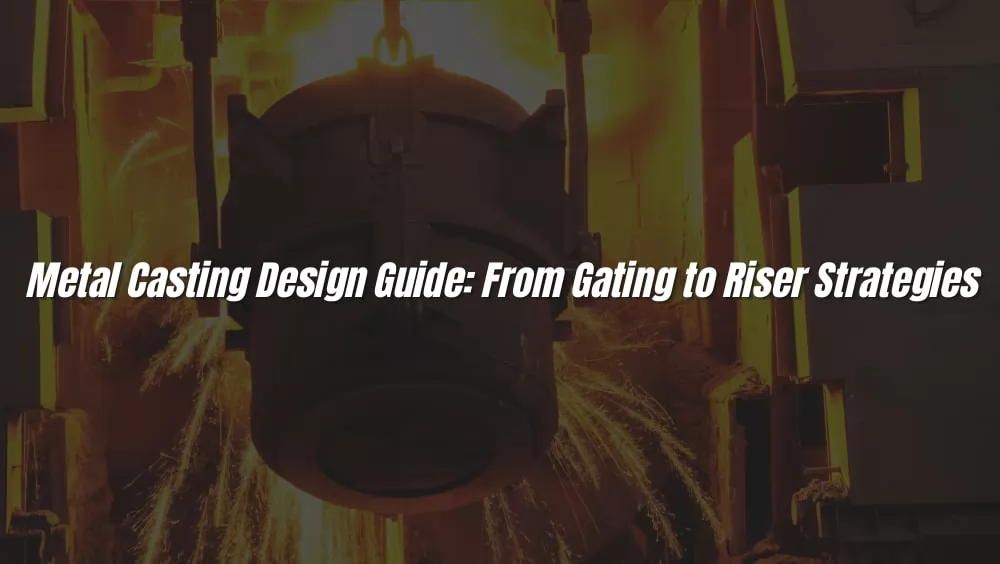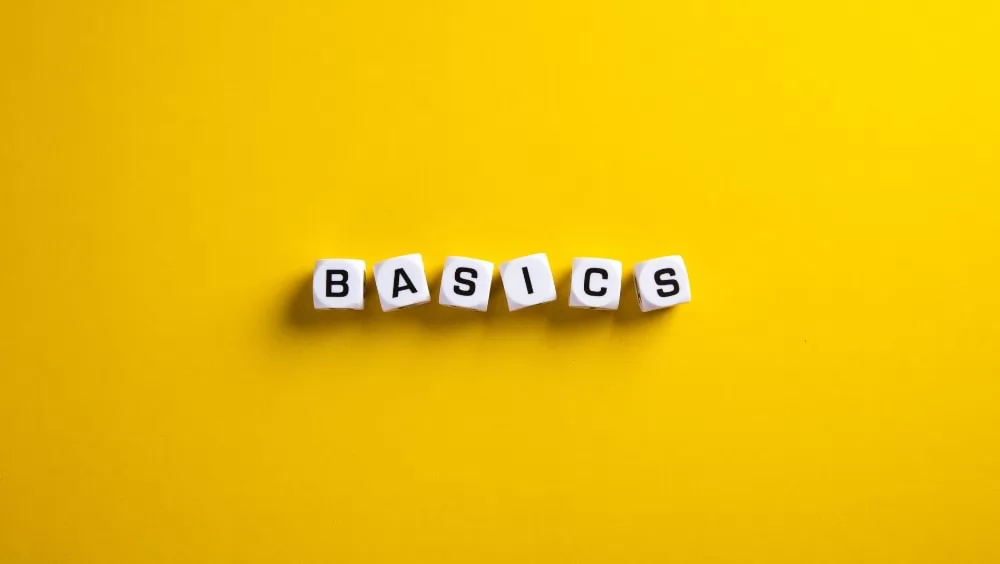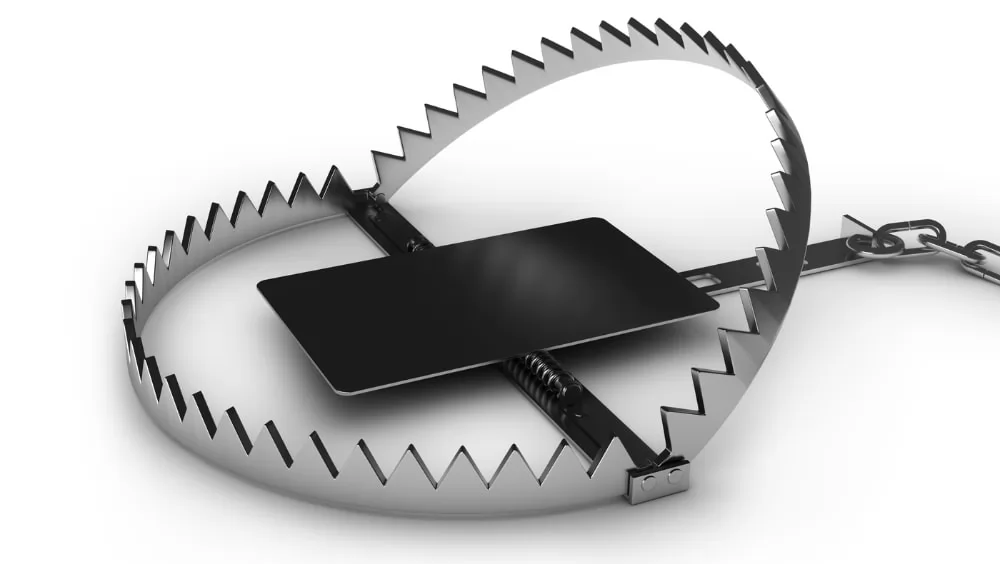
Metal casting is a complex process, and the gating system and riser design are crucial steps that directly affect casting quality and production efficiency. Understanding these design principles can effectively prevent common defects.
Have you ever encountered issues like gas porosity or shrinkage defects in your castings? Proper gating and riser design is key to solving these problems. This guide will equip you with practical tips to improve casting quality.
Next, we will combine real-world examples and simulation technology to help you design scientifically and optimize your process. Whether you are a beginner or an experienced engineer, you will benefit from this.
Table of Contents
- Understanding the Basics of Metal Casting Design
- The Role of Gating System in Casting
- Gating System Design
- Practical Tips for Effective Casting Design
- Riser Design Strategies
- Design for Manufacturability: Practical Tips
- Common Pitfalls in Gating and Riser Design
- FAQ
- Conclusion
Understanding the Basics of Metal Casting Design

At its core, metal casting design is not just about defining the final shape of a part — it’s about carefully controlling how molten metal flows into the mold and how it solidifies. A well-thought-out design ensures that the mold is completely filled, solidification happens in a controlled manner to avoid shrinkage defects, and the flow paths are smooth to prevent turbulence and the formation of inclusions. It also aims to use materials efficiently to keep costs under control.
The main objectives of good casting design are to minimize common defects such as porosity, cold shuts, and misruns, which can lead to poor quality parts. By reducing scrap and the need for rework, manufacturers can save time and resources. Ultimately, solid design practices enhance the repeatability and consistency of the casting process, especially important for high-volume production runs.
The Role of Gating System in Casting
The gating system is the pathway that guides molten metal into the mold cavity during casting. A good gating system ensures that the metal flows smoothly, fills the mold completely, and solidifies with minimal defects.
Think of it as the circulatory system of the casting — it must be well balanced to deliver the right amount of metal, at the right temperature, to the right place. A poor design can lead to problems like turbulence, gas entrapment, slag inclusions, or cold shuts.
Main functions:
Control flow rate: It regulates how quickly the metal enters the mold, preventing mold erosion and gas pockets.
Filter impurities: Filters or skimmers help remove slag and other inclusions to ensure cleaner metal.
Reduce turbulence: Smooth channels and gradual transitions help maintain a steady flow, minimizing oxidation and defects.
Components of a typical gating system:
Pouring basin: The reservoir where metal is poured to steady the flow.
Sprue: The vertical channel that directs metal downward.
Runner: The horizontal channel that distributes metal to the mold.
Gates: The openings through which metal enters the mold cavity.
In short, a well-designed gating system is essential for producing high-quality castings efficiently and with fewer defects.
Gating System Design
A solid gating design requires both experience and data. Getting it right can significantly improve casting quality and reduce defects.
Best Practices
Use Flow Simulation: Modern foundries rely heavily on computer software to simulate molten metal flow. These simulations predict flow patterns, identify turbulence zones, and reveal potential defects before the mold is made. This helps optimize the gating design, saving time and material costs.
Correct Sprue Design: Sprues should be tapered to maintain a steady and controlled flow of metal. A tapered sprue reduces air entrapment by preventing suction effects and helps maintain consistent velocity throughout the flow.
Choke Area: The choke, or the narrowest section of the gating system, controls the flow rate of molten metal. Proper sizing is critical—if the choke is too small, turbulence increases; if too large, flow may be inefficient, causing defects. Balancing the choke size ensures smooth filling.
Filtering: Incorporating ceramic or foam filters within the runner system helps trap slag, dross, and other impurities. This filtration improves metal cleanliness and reduces inclusions in the final casting.
Tip
Keep the gating system as simple and direct as possible. Excessive turns, bends, or junctions increase turbulence and the likelihood of inclusions, which can cause casting defects. A streamlined, straightforward design promotes smooth flow, minimizes oxidation, and enhances casting quality.
Practical Tips for Effective Casting Design

| Tip | Description |
|---|---|
| Uniform Wall Thickness | Keep thickness consistent to avoid hot spots and defects. |
| Use Fillets and Rounds | Replace sharp corners with smooth transitions for better flow. |
| Add Draft Angles | Facilitate mold removal and reduce surface damage. |
| Minimize Cores When Possible | Reduce complexity and risk of defects by limiting cores. |
| Plan for Machining Allowances | Include allowances for shrinkage and finishing. |
To improve the quality and efficiency of your casting designs, consider the following practical guidelines:
Uniform Wall Thickness
Maintaining consistent section thickness throughout the part helps prevent the formation of hot spots where the metal cools unevenly. Uneven thickness can cause internal stresses, warping, or shrinkage defects. Striving for uniform thickness also promotes more predictable solidification and reduces the risk of defects such as porosity.
Use Fillets and Rounds
Sharp corners tend to concentrate stress and obstruct smooth metal flow, leading to turbulence and possible cold shuts. Incorporating fillets and rounded transitions allows molten metal to flow more easily into all sections of the mold, resulting in better filling and improved mechanical strength in the final casting.
Add Draft Angles
Adding draft angles to vertical faces of your casting makes it easier to remove the pattern or mold without damaging the part. Adequate draft angles reduce friction and the chance of surface defects during ejection, thus improving the overall surface finish.
Minimize Cores When Possible
While cores are necessary for creating hollow sections or internal cavities, their use adds complexity to the mold and increases the chances of defects such as misruns, gas entrapment, or core shifts. Simplifying the design to reduce the number of cores, when feasible, can lead to more reliable castings and lower manufacturing costs.
Plan for Machining Allowances
Because castings typically shrink as they cool and solidify, it’s essential to incorporate machining allowances into your design dimensions. This ensures that after finishing operations like machining or grinding, the part will meet the required dimensional tolerances and surface quality.
Riser Design Strategies
Risers, also known as feeders, play a crucial role in preventing shrinkage defects during the casting process. As molten metal cools and solidifies, it shrinks in volume. Risers act as reservoirs that supply additional molten metal to compensate for this shrinkage, ensuring the casting remains defect-free and structurally sound.
Design for Manufacturability: Practical Tips
A great design isn’t just functional; it’s manufacturable. Here’s how to align your casting design with real-world production:
Simplify the Part Geometry: Complex designs often lead to complex mold setups, more cores, and higher defect rates.
Consider Tooling Constraints: Factor in how the mold will be made, assembled, and handled.
Optimize Parting Lines: A well-placed parting line makes mold production easier and improves dimensional accuracy.
Plan for Finishing Processes: Design features that make cleaning, grinding, and machining easier.
Common Pitfalls in Gating and Riser Design

Even seasoned designers can fall into these traps:
Oversized Risers
Lead to excess material waste and higher energy costs for melting.
Underfeeding Shrinkage Zones
Causes shrinkage cavities and rework.
Complex Gating Paths
Increase turbulence and risk of defects.
Ignoring Process Simulation
Skipping virtual testing often results in costly trial-and-error in production.
FAQ

Q1: What is the main role of the gating system in metal casting design?
The gating system guides molten metal smoothly into the mold, controlling flow rate and reducing gas porosity and inclusions.
Q2: How do you determine the best location for risers in metal castings?
Risers should be placed at the last areas to solidify, ensuring metal feeding to prevent shrinkage defects.
Q3: How does pouring temperature affect the quality of metal castings?
Too low temperature causes cold shuts; too high temperature leads to gas porosity and burn defects.
Q4: How is the riser size calculated for metal castings?
Riser size must have enough volume and insulation time to continuously feed shrinking areas during solidification.
Q5: What benefits does casting simulation software provide in metal casting design?
It predicts metal flow and solidification to optimize gating and riser design, reducing trial-and-error costs.
Conclusion
Proper gating and riser design can significantly reduce defects and increase yield. By combining simulation technology with practical experience, casting design becomes more efficient and precise.
Casting technology is constantly evolving, and only through continuous learning and optimization can you stay competitive and meet diverse casting requirements.
BESSER is committed to providing advanced technology and support to help the casting industry overcome challenges and achieve both quality and efficiency. We look forward to working with you for a better casting future.
Related Recommendations:
Top 10 Investment Casting Manufacturers & Suppliers in China
Best 10 Metal Casting Manufacturers and Suppliers
Top 10 Lost Wax Casting Companies: Latest List
How to source precision castings from China?
Best 10 Metal Casting Companies in the World



